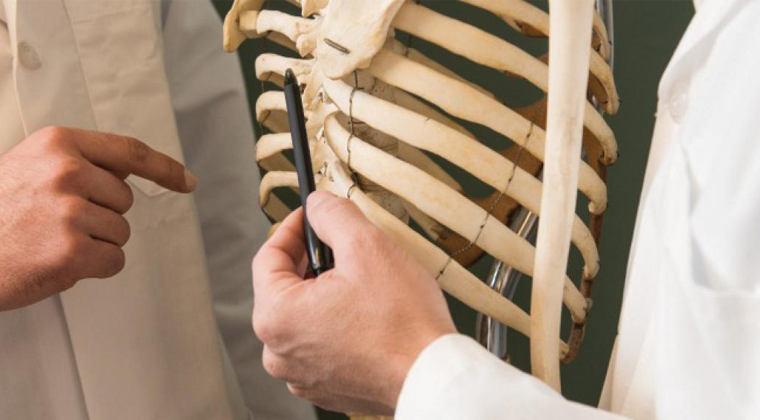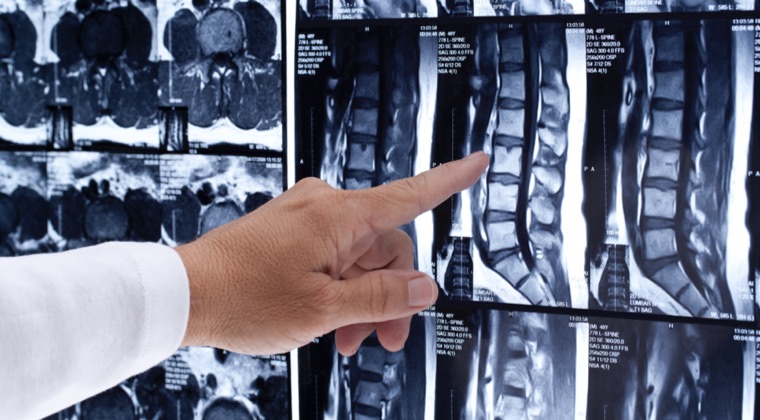Cryoneuroablation
What is the purpose of this procedure?
Cryoneuroablation refers to a procedure that uses freezing techniques to temporarily destroy a nerve that may be triggering pain. Cryoneuroablation is often used to help reduce pain in conditions such as chest wall pain, phantom limb pain, neuroma, peripheral neuropathy, knee osteoarthritis, and herpes zoster (shingles) or postherpetic neuralgia. In properly selected individuals, it can result in substantial long-term relief as part of a more comprehensive approach to pain management.
How does it work?
Cryoneuroablation involves inserting a probe next to the nerve that is going to be destroyed. Pressurized gas cools the tip of the probe to around -70 degrees C forming an ice ball on the nerve tissues. This freezing stops nerve signals immediately as well as destroys the nerve tissue preventing it from functioning. Deadening the nerves is similar to anesthesia but this procedure lasts longer as it takes many weeks to months for the nerve to rejuvenate.
What are the risks associated with this procedure?
This procedure is considered to be relatively safe with rare formation of neuromas. The damage to the nerve is usually reversible meaning that relief (while long lasting) is not likely to be permanent. Other risks are as follows:
- Possibility of bleeding
- Possibility of hematoma
- Allergic reactions
- Potential infection
- Nerve damage
- Depigmentation, hyperpigmentation or tissue damage around the site
- Potential Hair loss around the site
How should I prepare for the procedure?
You must have a driver with you at the time of check-in and check-out. Your driver must accompany you to the clinic for your procedure. You can be discharged only to the care of a responsible adult driver 18 years of age or older.
Since you will be receiving sedation, it is important that you do not eat within 6 hours before the procedure. Small amounts of clear liquids are ok up to 2 hours before the procedure. If you are a diabetic, be sure to discuss your eating and medication schedule with your doctor.
You may need to stop taking certain medications several days before the procedure. Please remind the doctor of all prescription and over-the-counter medications you take, including herbal and vitamin supplements. The doctor will tell you if and when you need to discontinue the medications.
Tell the doctor if you develop a cold, fever, or flu symptoms before your scheduled appointment, or if you have started taking antibiotics for an infection.
What will happen during the procedure?
The procedure is performed on an outpatient basis in a special procedure room equipped with a fluoroscope (x-ray) and/or ultrasound. In the pre-procedure area, the nurse or doctor places an IV line. This is used for fluids and sedation. Some of these procedures can be performed with direct observation while other may use ultrasound or fluoroscopy for precise placement. You can have this procedure done under local anesthesia while you are awake.
- For your safety and comfort, when you get to the procedure room you will be connected to monitoring equipment (EKG monitor, blood pressure cuff, and blood oxygen monitoring device).
- Cryoablation is a procedure in which an extremely cold liquid, or an instrument called a cryoprobe is used to freeze and destroy abnormal tissue. Once the nerves are identified, the skin is numbed, and a special cannula (tube) is directed to the area. A probe is inserted through this cannula. This probe cools at the tip and freezes the target nerve. Freezing typically occurs for 2 minutes. The freezing ablates (damages) the nerve. An ice ball is formed and then allowed to melt. Then additional 2 minute freezes are performed (usually 2–3 in total).
What should I expect after the procedure?
The area of your procedure will probably be very sore for the next week or so. Muscle spasms and nerve irritation usually cause this pain while the cryoablated nerves die back from the procedure. You should expect pain relief 2–6 weeks after the procedure.
Your back may feel slightly weak after the procedure. Do not drive for the rest of the day. You may resume your usual activities including work the next day.
The nerves can grow back over a period of months, eventually causing the pain to return. If this happens the procedure can usually be repeated.
Some people notice a change in skin color around the procedure site that can last a few days to months. There may also be some swelling or bruising. Some procedures have additional risks to cosmetic appearance, neural trauma, and the potential for infection.
Content supplied by: Ronald Wasserman, M.D. 1.29.2020
Disclaimer: This document contains information and/or instructional materials developed by Michigan Medicine for the typical patient with your condition. It may include links to online content that was not created by Michigan Medicine and for which Michigan Medicine does not assume responsibility. It does not replace medical advice from your healthcare provider because your experience may differ from that of the typical patient. Talk to your healthcare provider if you have any questions about this document, your condition, or your treatment plan. Patient Education by Michigan Medicine is licensed under a Creative Common Attribution-NonCommercial-ShareAlike 3.0 Unported (CC BY-NC-SA 3.0) License. Last Revised 06/2018



